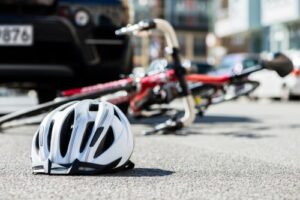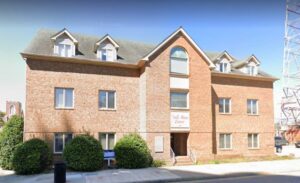The reality is that being a bicyclist in Hampton, Virginia can be potentially dangerous. Riding along crowded streets near the Virginia Air and Space Center, along the waterfront, or around Hampton University can all lead to unfortunate collisions with cars. These bike-car accidents are often quite serious and lead to serious injuries to the bike rider, while the driver is less harmed or often not even injured.
Our team of Hampton and Virginia Beach bicycle accident lawyers has handled these types of cases and it is stunning how catastrophic the injuries can be to a bicyclist when they’re hit by a negligent driver. Bike riders are considered to have the same rights as pedestrians at certain locations on their bikes. At other times, depending on their location, bicyclists must obey obligations the same as car drivers. In many cases, a skilled Hampton bicycle accident lawyer should be consulted right away when the rights and obligations of both the bicyclist and car or truck driver are at issue.
Most Common Bicycle Accident Injuries
Below are some common injuries that may result from bicycle accidents with motor vehicles. The exact type of injury depends a lot on a variety of factors:
- The kind of impact that was involved
- Whether the bike was hit from behind or the side
- Whether the bicyclist was wearing a helmet
- The type of vehicle that hit the bike operator and the speed it was traveling
The bike injuries described below are just a sample of what our Hampton Virginia personal injury lawyers have seen our clients suffer in these types of incidents.
Head Injuries
Unfortunately, one of the most common varieties of injuries from car-bicycle collisions is head injury. When bike riders are hit from behind or sideswiped, this can lead to the person being thrown off the bike without control over where they land. If the bicycle rider is thrown over their handlebars, it is likely that they will land on their head or neck.
If the bicycle rider is wearing a helmet the extent of the injuries may be reduced, but it does not ensure they will be protected from injuries. Even with a helmet, the brain of a bicyclist can still suffer a damaging impact against the side of their skull, leading to brain injuries like concussions. Traumatic brain injuries from bike accidents can result in damage such as memory loss, headaches, and in more serious cases, mood changes and permanent disability.
Neck and Spinal Injuries
Bicycle riders are especially vulnerable in the case of a bike accident with a passenger vehicle and lack safety restraints that are common in cars and trucks. In a collision, even a low-speed crash, the bike rider may be toppled off the bike, landing awkwardly on his or her head, neck, or back. Being thrown from a bicycle can cause serious damage to a person’s vertebrae and in the most serious cases, paralysis.
Broken Bones
Even in minor bike accidents, it is very common for a bike rider to suffer broken bones. Arms, shoulders, legs, hips, and hands are all exposed and many lack the kind of cushioning needed to safely absorb the impact of a car accident. Broken bones require trips to the doctor, casts, X-rays, and a variety of treatments that can quickly become expensive. Though the damage may not be life-threatening, the pain and expense associated with broken bones can still be substantial.
Bike & Car Drivers – Duty of Care
 Under Virginia law, people riding bicycles on a road, street, or highway have the same rights and duties that are applicable to motorists, but the duties of both car drivers and bicyclists vary depending on where each is located. Bike riders and motor vehicle operators are required to:
Under Virginia law, people riding bicycles on a road, street, or highway have the same rights and duties that are applicable to motorists, but the duties of both car drivers and bicyclists vary depending on where each is located. Bike riders and motor vehicle operators are required to:
- Comply with all traffic signs, signals, lights, and markings.
- Proceed through a solid red light at an intersection only if they first come to a complete stop at the intersection for two complete cycles of the traffic light or for two minutes, whichever is shorter (applies to bicyclists primarily where the light does not properly cycle).
- Treat traffic signals as stop signs.
- Ride on the right side of the road with the flow of traffic.
- Ride as close as possible to the right curb or edge of the roadway if they are riding at less than the normal speed of traffic.
- Yield to pedestrians when riding on a sidewalk, shared-use path, or crosswalk. If passing a pedestrian, the bike rider must alert the pedestrian with an audible signal.
- Car drivers must now leave a cushion of at least three feet to the left of the bicycle rider, the law states: Motorists must approach and pass a bicyclist at a reasonable speed at least three feet to the left of the bicyclist. If the lane is not narrow enough to allow three feet of space motorists must change lanes to pass. Motorists may not cross a solid line into a bicycle lane to pass other vehicles.
- Effective as of July 1, 2016, no motor vehicle operator shall open the door of a parked motor vehicle on the side adjacent to moving vehicular traffic unless it is reasonably safe to do so.
- Bicycles may be ridden on sidewalks in Virginia unless prohibited by a local ordinance or traffic control devices.
- Bicyclists crossing intersections with pedestrian traffic must obey Walk/Don’t Walk control signals or countdown timers.
- It is generally safest for bicyclists to “take the lane.” When moving consistent with prevailing traffic, they should ride near the center of any travel lane of ordinary width (10-12 feet), and when approaching intersections, driveways, and alleys. Bicyclists may ride along the right of the travel lane when moving much slower than traffic.
- When riding bikes on the sidewalk or paths, call to pedestrians when approaching from behind and to pass, and give the right of way to pedestrians.
- The drivers of vehicles entering, crossing, or turning at intersections shall change their course, slow down, or stop if necessary to permit pedestrians to cross such intersections safely and expeditiously. [Bicyclists are treated as pedestrians if crossing in marked crosswalks]. Pedestrians crossing highways at intersections shall at all times have the right-of-way over vehicles making turns into the highways being crossed by pedestrians.
- Virginia bike operators must use white headlamps visible 500 feet, rear reflectors, and a red taillight when bicycling between sunset and sunrise.
Call a Hampton Virginia Bike Accident Attorney for a Free Evaluation
The Hampton Virginia personal injury attorneys at Shapiro, Washburn & Sharp understand that the injuries bike accident victims sustain can leave them with permanent disabilities that not only create physical limitations but also result in significant financial losses.
If you or a loved one were injured in a bicycle or any other type of motor vehicle accident, it is critical not to delay contacting our firm because Virginia injury laws have strict rules regarding how long you have to file your personal injury claim. If the statute of limitations expires, you will be unable to collect financial damages for any medical expenses, loss of income, pain and suffering, or any other losses you may be entitled to.
 Call our office today at (833) 997-1774 or click here to schedule a free and confidential consultation. Our Hampton, Virginia office is conveniently located at 101 Eaton Street, Hampton, VA, less than a half mile away from the Hampton Circuit Court.
Call our office today at (833) 997-1774 or click here to schedule a free and confidential consultation. Our Hampton, Virginia office is conveniently located at 101 Eaton Street, Hampton, VA, less than a half mile away from the Hampton Circuit Court.
RELATED CONTENT
Drivers Must Protect Bike Riders When They Pass and Park
Bicycle Accidents and Virginia Right of Way Laws
Steps to Take if You Are a Victim of a Virginia Bike Accident